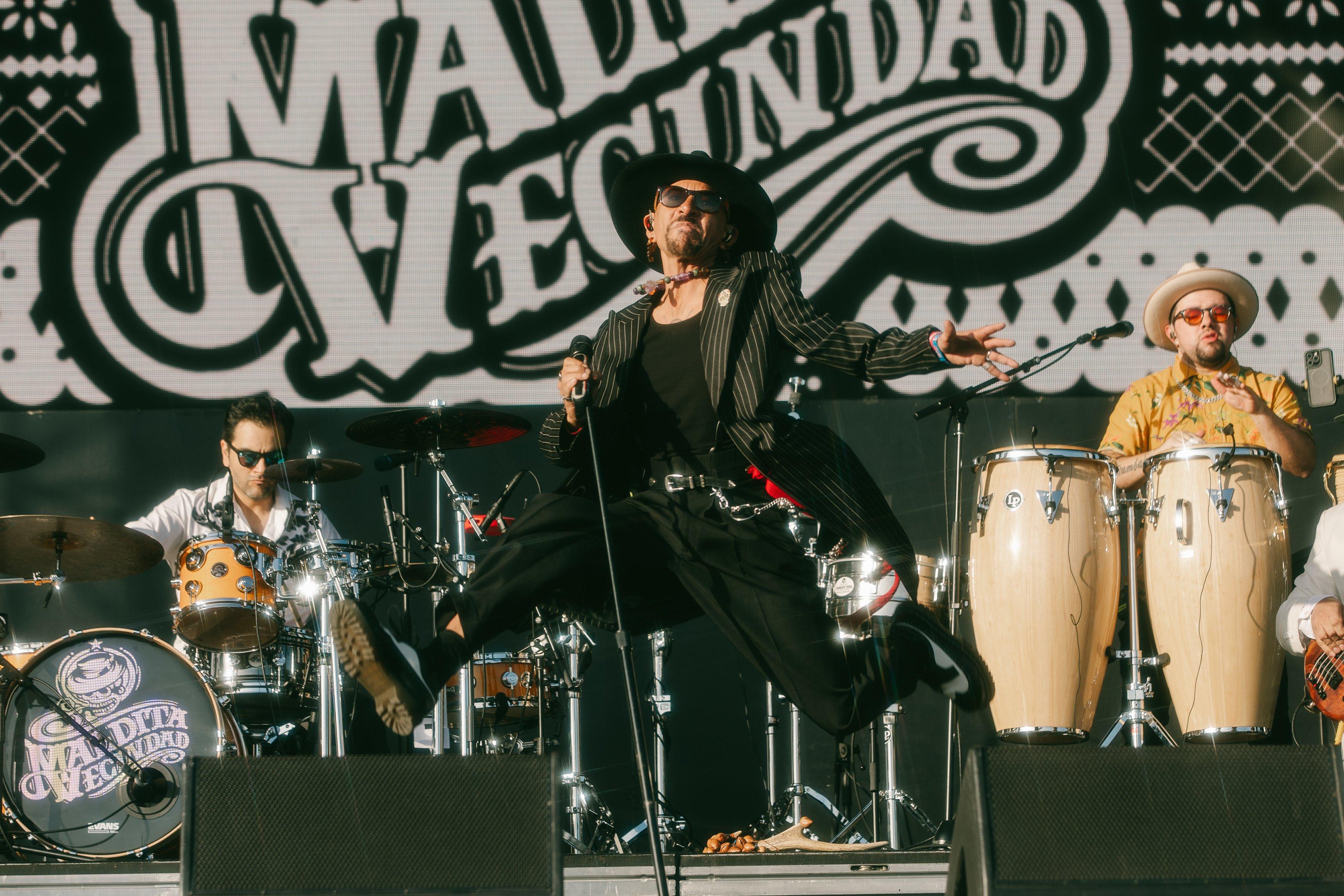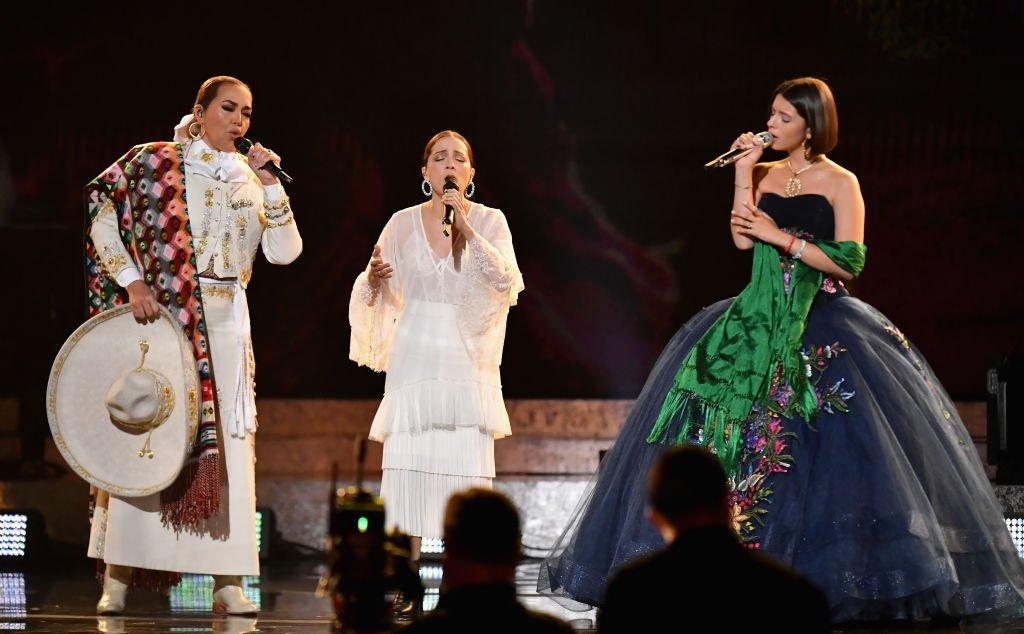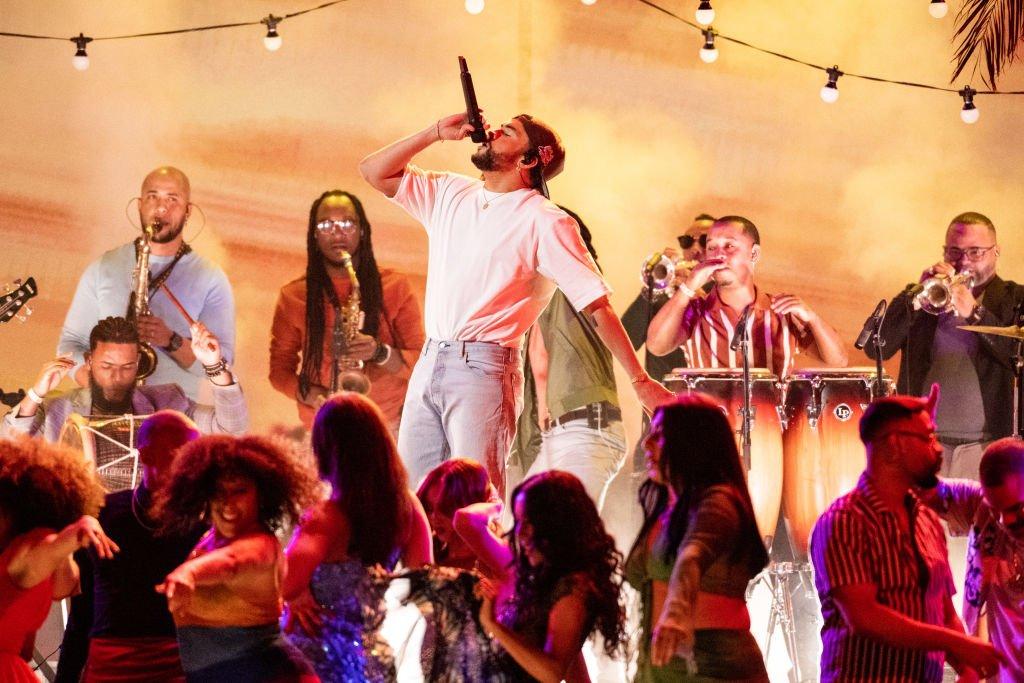(For a complete list of 54th GRAMMY Awards nominees, click here.)
You've seen the list of nominees, now take a closer look at the artists nominated in the Latin Field for the 54th Annual GRAMMY Awards.
From the progressive urban beats of a politically charged Puerto Rican outfit and a rousing tribute to Mexican ranchera to the jazzy soundscapes of a late mambo king, the nominated recordings in the four Latin categories reflect the depth and richness of the expansive Latin music genres.
Best Latin Pop, Rock, Or Urban Album
After picking up a record nine awards at the recent 12th Annual Latin GRAMMY ceremony last November, Calle 13 is attempting to take home their third GRAMMY statue. The Puerto Rican duo's latest studio album, Entren Los Que Quieran, combines infectious hip-hop beats with the shimmering beauty of Latin folklore. Also making the grade is Mexican-American singer Gustavo Galindo. His debut album, Entre La Ciudad Y El Mar, was produced by Latin rock godfather Gustavo Santaolalla, who is a two-time GRAMMY winner. Hailing from Caracas, Venezuela, La Vida Bohème concoct an infectious blend of salsa with disco, punk and dance on the riveting Nuestra. Also from Venezuela, Los Amigos Invisibles sets an experimental mood on Not So Commercial. The veteran sextet creates explosive contrasts between lounge instrumentals and funk workouts throughout. Rounding out the category is Mexico's Maná. The three-time GRAMMY-winning quartet returns to arena-rock action with the appropriately titled Drama Y Luz (Drama And Light).
Best Regional Mexican Or Tejano Album
The son of ranchera icon Luis Aguilar, singer/songwriter Pepe Aguilar has found his true calling in the regional Mexican genre. His latest album, Bicentenario, celebrates the recent bicentennial of Mexico's independence. Brimming with texture and bravado, the voice of Paquita La Del Barrio is especially effective whenever she chastises deceitful men on her tragicomic hit singles. Eres Un Farsante (You Are A Fraud) finds her at the top of her game. One of Mexican music's most prolific songwriters, Joan Sebastian has composed songs in the ranchera, norteño, banda sinaloense, and Latin pop genres. Huevos Rancheros demonstrates the four-time GRAMMY winner's penchant for penning memorable songs. The all-female ensemble Mariachi Divas De Cindy Shea earned a nod for Órale. Founded in 1999 by trumpeter Shea, the ensemble picked up a GRAMMY in 2008 for Best Regional Mexican Album for Canciones De Amor. Texas-based ensemble Mariachi Los Arrieros Del Valle rounds out the category, receiving their first GRAMMY nomination for Amor A La Música.
Best Banda Or Norteño Album
The zesty accordion lines of norteño and the epic tuba riffs of banda sinaloense are ever present in this year's race. Three genre heavyweights come face-to-face this year: Five-time GRAMMY winners Los Tigres Del Norte with the star-studded live recording Los Tigres Del Norte And Friends; Tijuana superstars Los Tucanes De Tijuana with the roots-laden corrido collection El Árbol; and two-time GRAMMY winners Intocable with the more gentle norteño ballads featured on Intocable 2011. El Güero Y Su Banda Centenario are looking to add to their GRAMMY trophy case, having won for Best Banda Album for Enamórate De Mí in 2010. Their album Estare Mejor is filled with lush banda orchestrations. The old-fashioned norteño goodness of Tejano artist Michael Salgado is on full display on No Vengo A Ver Si Puedo... Si Por Que Puedo Vengo. Salgado is looking to win his first GRAMMY to go with his 2007 Latin GRAMMY Award for Best Norteño Album for En Vivo.
Best Tropical Latin Album
Cachao's The Last Mambo is a glowing collection of nostalgic danzones and jazzy descargas. The album was recorded in concert by the late Latin GRAMMY-winning Cuban bassist at the Ziff Opera House in Miami in 2007. Edwin Bonilla's Homenaje A Los Rumberos pays tribute to the New York salsa explosion of the '70s with vibrant new versions of dance-floor scorchers by the likes of Rubén Blades and Tite Curet Alonso. José Rizo's Mongorama features the finest players from today's Latin jazz circuit: conguero Poncho Sanchez, saxophonist Justo Almario and pianist Oscar Hernández, among others. Mongorama is a swinging homage to the deep Latin jazz aesthetic of groundbreaking Cuban percussionist Mongo Santamaría.
Who will take home the awards in the Latin Field categories? Tune in to the 54th Annual GRAMMY Awards on Feb. 12, taking place at Staples Center in Los Angeles and airing live on CBS from 8–11:30 p.m. (ET/PT).
(Note: The videos embedded reflect official videos available through official artist and record label Web channels.)




